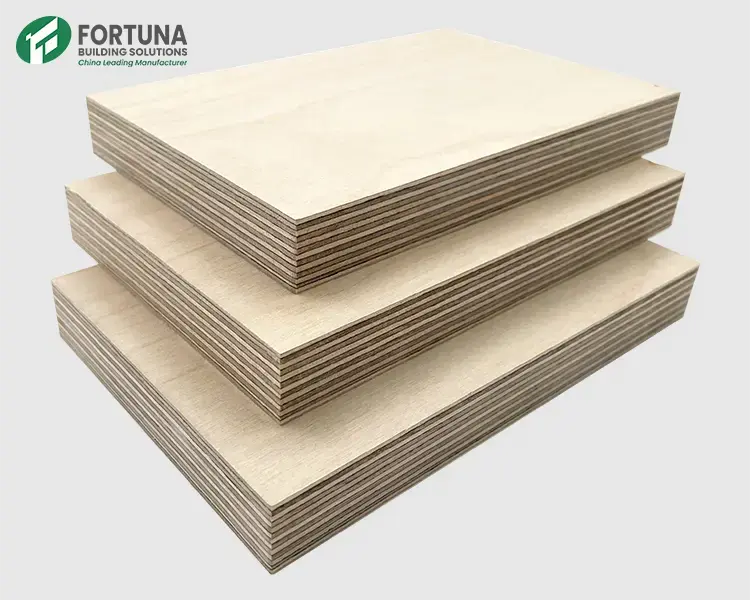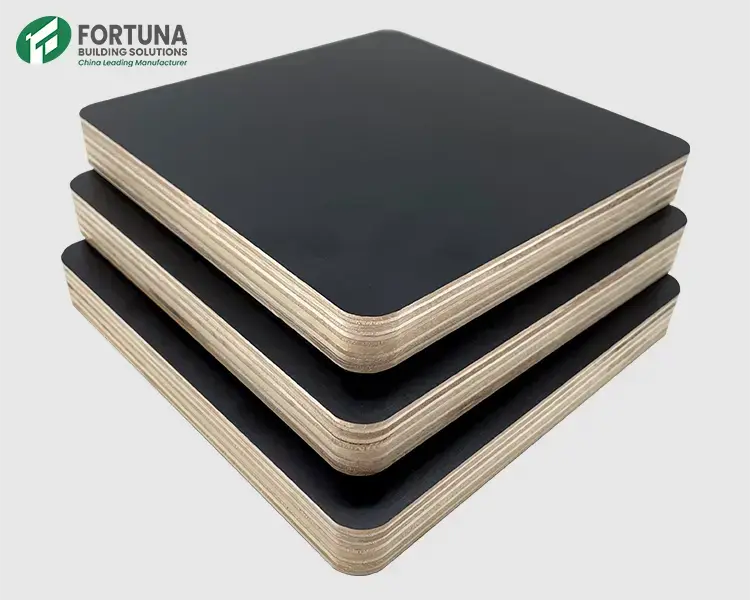Packaging & Delivery Methods of Plywood
Proper packaging and delivery methods are crucial for ensuring that wood-based panels such as Plywood, Film Faced Plywood, Medium Density Fiberboard (MDF), Melamine Board, Particle Board, Marine Plywood, and Oriented Strand Board (OSB) arrive at their destinations in optimal condition. Below is an overview of common packaging techniques and delivery options for these materials.
Common Packaging Methods
1.Bundling and Strapping
Description: Sheets are stacked into bundles, typically containing 50 or more sheets, depending on thickness. These bundles are secured with metal or plastic strapping bands.
Application: Widely used for Plywood, Film Faced Plywood, and OSB.
Considerations: Ensure strapping is of adequate strength and properly joined to maintain bundle integrity during handling and transit.
2.Palletization
Description: Bundles are placed on wooden or composite pallets to facilitate forklift handling and provide a stable base.
Application: Common for MDF, Melamine Board, and Particle Board.
Considerations: Pallets should be sturdy and appropriately sized to support the load without overhang.
3.Protective Wrapping
Description: Bundles are wrapped with materials such as plastic film, shrink wrap, or waterproof paper to shield against moisture and dirt.
Application: Utilized across various panel types, especially those sensitive to moisture like MDF and Particle Board.
Considerations: Ensure wrapping is intact and covers all exposed surfaces to prevent water ingress.
4.Edge and Corner Protection
Description: Reinforcements such as cardboard, plastic, or metal protectors are placed on edges and corners to prevent damage.
Application: Essential for high-value panels like Melamine Board and Marine Plywood.
Considerations: Properly secured protectors help maintain panel integrity during stacking and transport.
5.Crating
Description: Panels are enclosed in wooden crates, providing robust protection.
Application: Used for international shipments or when extra protection is needed.
Considerations: Crates add weight and cost but offer superior protection against physical damage.
Common Delivery Methods
1.Road Transport
Description: Utilizes trucks for direct delivery to destinations.
Application: Ideal for domestic shipments and short to medium distances.
Advantages: Flexible scheduling and door-to-door service.
Considerations: Ensure vehicles are equipped to handle the load and that routes accommodate oversized shipments.
2.Rail Transport
Description: Employs trains to move large quantities over long distances.
Application: Suitable for bulk shipments within and between countries.
Advantages: Cost-effective for heavy loads and reduces road congestion.
Considerations: Requires coordination with rail schedules and additional handling for final delivery.
3.Sea Freigh-20ft, 40ft, and 40ft HQ containerst
Description: Ships transport goods internationally via containers or break bulk.
Application: Preferred for exporting large volumes overseas.
Advantages: Economical for long-distance and high-volume shipments.
Considerations: Longer transit times and the need for port facilities.
4.Air Freight
Description: Airplanes deliver goods quickly across long distances.
Application: Used for urgent deliveries or high-value items.
Advantages: Fastest mode of transport.
Considerations: Higher costs and limitations on shipment size and weight.
Additional Considerations
Shipping Documents Provided
Commercial Invoice & Packing List
Certificate of Origin (COO)
FSC, CE, CARB, EUTR, & EPA Certifications
Bill of Lading (B/L)
Compliance with ISPM 15
When using wood packaging materials like pallets or crates for international shipments, compliance with ISPM 15 standards is necessary to prevent the spread of pests. This involves heat treatment or fumigation and appropriate marking of the wood packaging.
Moisture Control
Materials like MDF and Particle Board are susceptible to moisture. Incorporating desiccants and ensuring airtight wrapping can mitigate moisture-related damage during transit.
Handling Instructions
Description: Airplanes deliver goods quickly across long distances.
Application: Used for urgent deliveries or high-value items.
Advantages: Fastest mode of transport.
Considerations: Higher costs and limitations on shipment size and weight.
Shipping Documents Provided:
Clearly label packages with handling instructions, including weight, orientation, and stacking limitations, to guide handlers and prevent mishandling.
By implementing appropriate packaging and selecting suitable delivery methods, manufacturers and suppliers can ensure that wood-based panels reach their destinations safely and in excellent condition.
More Support
Packaging & Delivery
How to quickly and safely deliver the Plywood products you ordered to the designated location? You can choose from the following methods.
Packaging & Delivery
How to quickly and safely deliver the Plywood products you ordered to the designated location? You can choose from the following methods.
Plywood Core
In order to adapt to different working scenarios, we provide the following plywood cores for you to choose.
Plywood Core
In order to adapt to different working scenarios, we provide the following plywood cores for you to choose.

Glue Types
In order to adapt to different environments and scenarios, we provide a variety of plywood glue for you to choose.
Glue Types
In order to adapt to different environments and scenarios, we provide a variety of plywood glue for you to choose.
Plywood Certificate
To give you more peace of mind, we have obtained a variety of certifications to meet your needs.
Plywood Certificate
To give you more peace of mind, we have obtained a variety of certifications to meet your needs.






